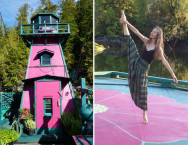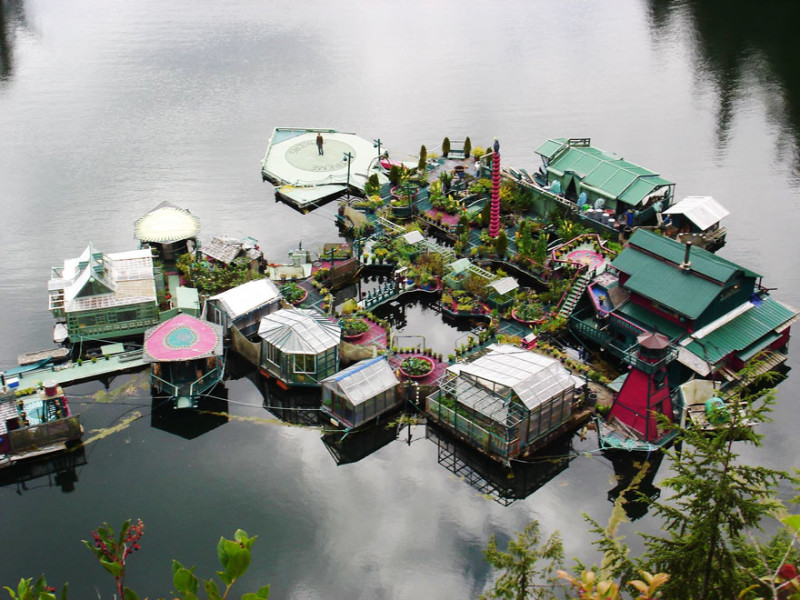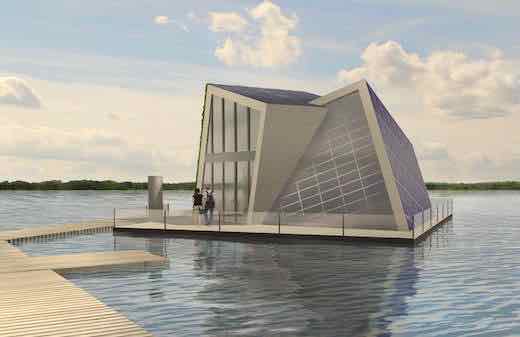

This huge floating fortress of sustainable living, off the coast of Vancouver Island British Columbia has inspired many to follow a sustainable life. Wayne Adams, 66, and Catherine King, 59, built their home together in 1992, and have been growing and fishing for their own food ever since.
The home, named “Freedom Cove,” consists of 12 floating platforms that include a dance floor, an art gallery, a guest lighthouse, a studio for Adams and King, and 5 greenhouses. The settlement is next to half an acre of land for growing edible crops. The couple gets water from a nearby waterfall during the summer and from rainwater during the winter. The settlement had been powered by an array of 14 solar panels, but recently switched to a generator after these broke down.
Perhaps inspired by the Floating Cove – a new design is being proposed in Germany, although still in the planning stages.The Lusation Autartec prototype will be built on Lake Geierswalde in the Lusatian Lake District.

The two-story floating home will be built on a steel pontoon measuring 43 x 43 ft (13 x 13 m). The ground floor is planned 807 sq ft (75 sq m), and the first floor just 365 sq ft (34 sq m). There will also be a deck running around the perimeter of the building.
Heating via a fireplace, will feature a supersaturated solution of salt hydrates to soak up heat from the flames. The designers claim that after this solution is heated in a special tub, which is placed over the fire, and liquefies, it is capable of holding in the heat practically indefinitely. The system works similarly to a chemical hand warmer, since the solution can be made to crystallize via a radio-based technology, which releases the heat on command. There is also a back up zeolith thermal storage unit, which is located inside the pontoon. During the summer, the zeolith minerals dry out, while in winter, by circulating moist air through the pontoons an exothermic reaction occurs which releases further heat.
The home will also feature a so-called adiabatic cooling system, which doesn’t require any energy and is based on the principle of evaporative cooling. Basically, moistening a side of the house will work to draw heat out as this moisture evaporates. All the needed power will be provided by solar panels built into the actual structure of the home. The energy produced will be stored in lithium polymer batteries hidden away inside the stairs.
The home will also be off-the-grid in terms of water needs. This will be achieved by means of a closed loop system. The biological reprocessing system will be based on ceramics, photocatalysis, electrochemistry, and filtration. The entire system will be small enough to fit into the pontoon, but robust enough to handle all the water purifying needs.
When they aren’t working on their sustainable lifestyle, they …
2023 © Off-Grid.net
9b Audrey St. London E2 8QH
email news@off-grid.net
call US office: toll-free 1-877-706-7423
OR
UK: +44 207 729 2749
How to register – Coming Soon
How to Manage your off-grid account
How to use the off-grid map – Coming Soon
Coming Soon